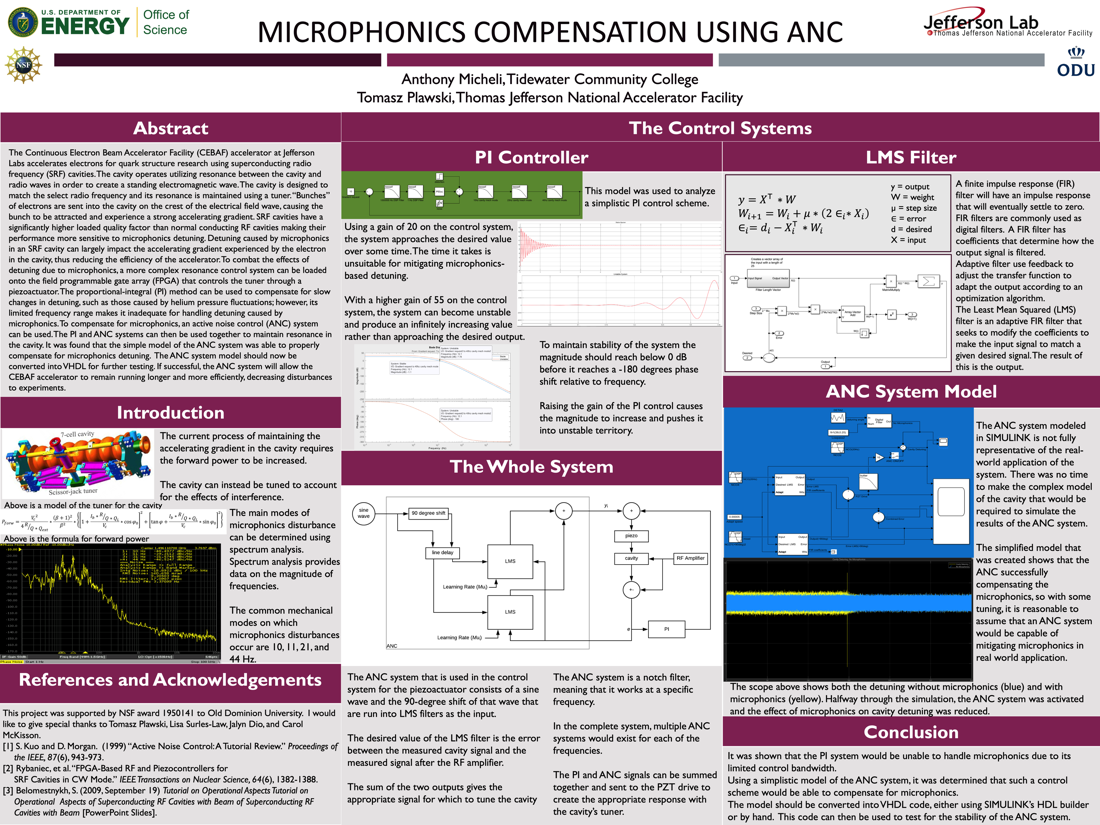Undergraduate Research at Jefferson Lab
Microphonics Compensation Using ANC
Student: Anthony Micheli
School: Tidewater Community College
Mentored By: Tomaz Plawski
The Continuous Electron Beam Accelerator Facility (CEBAF) accelerator at Jefferson Labs accelerates electrons for quark structure research using superconducting radio frequency (SRF) cavities. The cavity operates utilizing resonance between the cavity and radio waves in order to create a standing electromagnetic wave. The cavity is designed to match the select radio frequency and its resonance is maintained using a tuner. "Bunches" of electrons are sent into the cavity on the crest of the electrical field wave, causing the bunch to be attracted and experience a strong accelerating gradient. SRF cavities have a significantly higher loaded quality factor than normal conducting RF cavities making their performance more sensitive to microphonics detuning. Detuning caused by microphonics in an SRF cavity can largely impact the accelerating gradient experienced by the electron in the cavity, thus reducing the efficiency of the accelerator. To combat the effects of detuning due to microphonics, a more complex resonance control system can be loaded onto the field programmable gate array (FPGA) that controls the tuner through a piezoactuator. The proportional-integral (PI) method can be used to compensate for slow changes in detuning, such as those caused by helium pressure fluctuations; however, its limited frequency range makes it inadequate for handling detuning caused by microphonics. To compensate for microphonics, an active noise control (ANC) system can be used. The PI and ANC systems can then be used together to maintain resonance in the cavity. It was found that the simple model of the ANC system was able to properly compensate for microphonics detuning. The ANC system model should now be converted into VHDL for further testing. If successful, the ANC system will allow the CEBAF accelerator to remain running longer and more efficiently, decreasing disturbances to experiments.
[Watch the presentation on YouTube]

Citation and linking information
For questions about this page, please contact Education Web Administrator.
